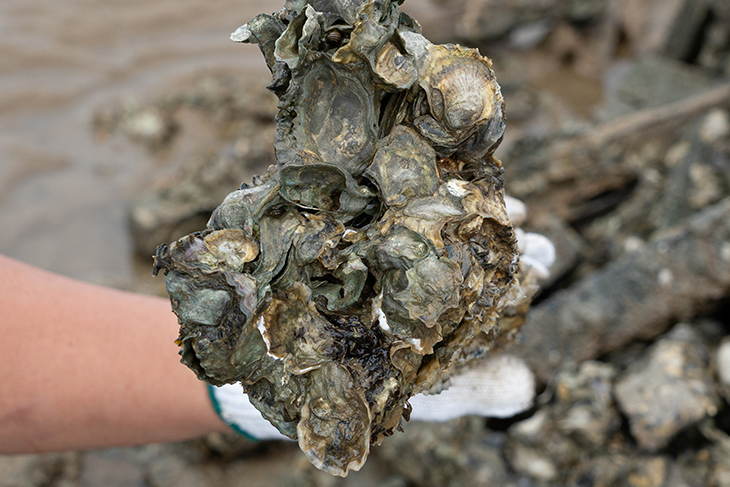
In the vibrant tapestry of Hong Kong’s ever-evolving landscape, where skyscrapers pierce the sky and urban development marches ceaselessly forward, there exists a quiet and steadfast presence amidst the chaos: the humble oyster.
For generations, the oyster reefs of Hong Kong have suffered from degradation, their once-thriving communities dwindling under the weight of environmental pressures. However, in a heartening display of environmental stewardship, a concerted effort is underway to restore and revitalize these vital ecosystems.
At the heart of this endeavor lies a simple yet profound realization: the oyster, specifically the Magallana hongkongensis, possesses an unparalleled ability to filter impurities from the water. Each of these remarkable creatures, when properly tended to, can purify up to 200 liters of water per day, serving as nature’s own filtration system in the bustling waters of Hong Kong.
Leading the charge in this restoration effort is The Nature Conservancy, a prominent conservation organization with a dedicated chapter in Hong Kong. Working in collaboration with local restaurants and waste services, they have established a remarkable initiative to collect and recycle oyster shells. Every Thursday, their fleet of vehicles traverses the city, gathering sacks of used oyster shells from participating establishments. These shells are then meticulously cleaned and dried before being deposited in designated enclosures at landfills, where they undergo further processing to ensure the removal of any residual flesh or bacteria.
After a year of preparation, these shells are reintroduced into the waters above selected reefs, identified as prime candidates for regeneration. This initiative, as reported by Sofia Quaglia of The Guardian, represents a crucial step towards restoring the delicate balance of Hong Kong’s marine ecosystems.
The scale of this undertaking is truly impressive, with The Nature Conservancy collecting nearly one metric ton of shells from a diverse array of sources, including hotels, supermarkets, and small-scale restaurants. Since its inception in 2020, approximately 80 metric tons of shells have been recycled, signaling a significant commitment to the cause.
But the impact of this initiative extends far beyond the mere replenishment of oyster populations. By bolstering the mass of material available for oyster larvae to attach to, these recycled shells serve as the building blocks of rejuvenated reefs. Moreover, they provide essential habitat for a myriad of marine species, including sea sponges and other foundational organisms that form the bedrock of the marine food web.
Recognizing the importance of quantifying the success of these restoration efforts, both the City University of Hong Kong and the Swire Institute of Marine Science have embarked on comprehensive studies to assess the efficacy of the recycling method. Through meticulous research and analysis, they seek to understand the full extent to which oyster populations can be restored and sustained in the waters of Hong Kong.
To date, these efforts have yielded promising results, with four distinct projects underway across various regions, from the eastern shores of the island to the vicinity of the bustling airport. Each project represents a beacon of hope, a testament to the resilience of nature and the unwavering dedication of those committed to its preservation.
In the grand tapestry of Hong Kong’s urban landscape, the humble oyster emerges as a symbol of resilience and renewal, a reminder of the profound interconnectedness between humanity and the natural world. Through collective action and shared stewardship, we can ensure that these vital ecosystems thrive for generations to come.
What are your thoughts? Please comment below and share this news!
True Activist / Report a typo


